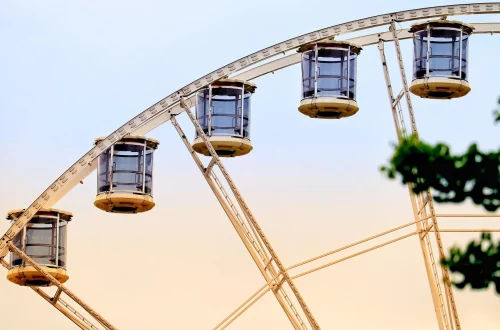
The Symbolism of a Dove in a Cage: Freedom and Confinement Unveiled
The imagery of a dove in a cage evokes a profound exploration of the human condition, contrasting the ideals of freedom and the harsh realities of confinement. Doves, universally recognized as symbols of peace and hope, represent an innate desire for liberation and the pursuit of happiness. However, when placed within the confines of a cage, this symbolism shifts dramatically, inviting us to contemplate the psychological and emotional implications of restriction.
This juxtaposition raises critical questions about our own lives and the societal structures that may confine us. In many ways, the cage can be seen as a metaphor for various forms of limitations we encounter—be it through societal expectations, personal fears, or external circumstances. As we delve into this complex symbolism, we begin to unravel the intricate layers of meaning that the dove encapsulates, reflecting not just the longing for freedom but also the struggle against the barriers that hinder us.
As we navigate this exploration, we will uncover the various interpretations of the dove’s symbolism, from its representation in literature to its presence in art and culture. The image serves not only as a poignant reminder of the yearning for liberty but also as a catalyst for deeper introspection about the nature of confinement and the paths we take toward emancipation.
Symbolism of the Dove: A Universal Emblem of Peace
The dove has been a powerful symbol across cultures and religions for centuries, often embodying peace, purity, and hope. In many religious texts, such as the Bible, the dove is depicted as a messenger of love and reconciliation. The story of Noah’s Ark, where a dove returns with an olive branch, serves as a profound reminder of new beginnings and the restoration of peace after turmoil. This imagery resonates deeply with the human experience, invoking feelings of comfort and safety.
In art, the dove often appears as a central figure, representing the ideal of harmony among individuals and nations. Artists throughout history have utilized the dove to convey messages of non-violence and the universal quest for understanding and coexistence. For instance, Picasso’s depiction of the dove in his lithograph as a symbol of peace during wartime illustrates the powerful connection between this bird and the human desire for tranquility.
Yet, the symbolism of the dove extends beyond mere peace. The dove is also associated with love, often depicted in romantic contexts, symbolizing affection and fidelity. This multifaceted representation serves to deepen our understanding of the dove as a creature that embodies both personal and collective aspirations for a better world. It reflects our innate longing for connection, understanding, and the freedom to express our true selves.
However, when we consider the image of a dove confined within a cage, the optimistic interpretations of its symbolism become complicated. The juxtaposition of the dove’s inherent qualities against the backdrop of confinement highlights the tension between freedom and restriction. This dynamic prompts a critical examination of the barriers that exist not only in the external world but also within our own minds.
The Cage: A Metaphor for Confinement
The cage, in stark contrast to the dove, represents a myriad of limitations that individuals may face throughout life. It serves as a powerful metaphor for various forms of confinement—be they physical, emotional, or societal. The cage can symbolize the boundaries set by societal norms, personal fears, or even the expectations we impose on ourselves.
In a psychological context, the feeling of being caged can lead to a sense of helplessness and despair. Many individuals find themselves trapped in situations that stifle their growth, creativity, and potential. This experience can manifest in various forms, such as restrictive relationships, unfulfilling careers, or mental health struggles. The metaphor of the cage invites us to reflect on the invisible barriers that limit our freedom and prevent us from pursuing our true passions.
Moreover, the imagery of a dove in a cage also raises questions about the nature of control and autonomy. The cage may represent the societal structures that dictate our choices, limiting our ability to explore new horizons. In this sense, the cage can be viewed as a reflection of the societal pressures that often dictate how we should live our lives, leading to a disconnection from our authentic selves.
Recognizing the confines of our personal cages is the first step toward liberation. It requires a willingness to confront the fears and beliefs that hold us back, allowing us to break free from the constraints that inhibit our growth. By acknowledging these limitations, we can begin to explore avenues for change, ultimately striving for the freedom that the dove symbolizes.
The Intersection of Freedom and Confinement
The relationship between the dove and the cage poignantly represents the dichotomy of freedom and confinement. This intersection invites deep reflection on the complexities of the human experience, highlighting how individuals navigate their desires for freedom amidst the realities of constraints.
Freedom is often perceived as a fundamental right, yet for many, it remains an elusive concept. The desire to soar like a dove is overshadowed by the weight of societal expectations, personal insecurities, and the limitations imposed by circumstances. This struggle for freedom is not just a physical pursuit; it is also a profound emotional and psychological battle.
In exploring this dynamic, we must consider the various forms of confinement that people encounter. For some, it may be a lack of opportunities, while for others, it could be internalized fears that hinder their ambitions. The imagery of the dove, longing to break free from the cage, resonates with anyone who has felt the weight of their circumstances pressing down upon them.
The process of seeking freedom often involves confronting the very confines that seek to hold us back. This journey may require taking risks, challenging societal norms, and embracing vulnerability. It is in this pursuit that individuals can discover their true potential and reclaim their autonomy.
Ultimately, the symbolism of the dove in a cage serves as a powerful reminder of the ongoing struggle for liberation. It challenges us to reflect on our own lives, encouraging us to identify the cages we inhabit and to seek the freedom that lies beyond them. Embracing this journey can lead to profound personal growth and a deeper understanding of what it means to live authentically.
Embracing the Journey Towards Freedom
The journey toward freedom is not a linear path but rather a multifaceted process that requires resilience, introspection, and courage. As we navigate the complexities of our lives, the symbolism of the dove can inspire us to embrace this journey with hope and determination.
To begin this journey, it is essential to acknowledge the existence of our cages. This requires honest self-reflection and a willingness to confront the fears and limitations that may have been accepted as part of our reality. By recognizing these barriers, we gain clarity about what truly holds us back and can take the necessary steps toward liberation.
Setting personal goals can be a powerful tool in this pursuit. Whether it involves pursuing a passion, seeking new opportunities, or challenging societal norms, having a clear vision can provide direction and motivation. The act of setting intentions allows individuals to prioritize their desires and make conscious choices aligned with their aspirations.
Moreover, seeking support from others can greatly enhance the journey toward freedom. Engaging with communities, mentors, or supportive friends can provide encouragement, guidance, and accountability. Sharing experiences with others who have navigated similar challenges can foster a sense of belonging and inspire individuals to push beyond their perceived limitations.
Finally, cultivating resilience is crucial in the face of setbacks and obstacles. The path to freedom may be fraught with challenges, but maintaining a positive mindset and a determination to keep moving forward can make all the difference. Embracing failure as a learning opportunity and celebrating small victories along the way can help sustain motivation.
In conclusion, the symbolism of a dove in a cage encapsulates the intricate relationship between freedom and confinement. It serves as a reminder of the struggles many individuals face in their pursuit of liberation. By acknowledging our cages, embracing our journeys, and fostering resilience, we can move closer to experiencing the freedom that the dove represents—a freedom that allows us to soar and live authentically.




